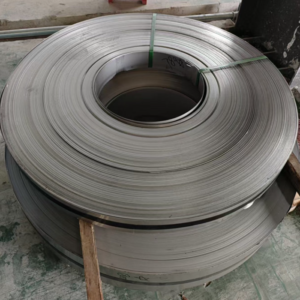Get in touch with us
Leave a message
Discover our comprehensive stainless steel collection, featuring austenitic, ferritic, and duplex grades for diverse industrial applications. From high-performance industrial grades to specialized corrosion-resistant options, we offer various material compositions and finishes to meet your specific requirements. Our expertise covers multiple stainless steel types, ensuring optimal performance and value across different price points. Whether you need standard or custom specifications, our professional team provides tailored solutions backed by industry expertise.

The story of stainless steel begins in the early 20th century. In 1913, Harry Brearley, a British metallurgist, discovered that adding chromium to steel created a corrosion-resistant alloy while experimenting with gun barrel materials. This marked the birth of stainless steel as we know it. Initially used for cutlery, its applications expanded rapidly with advancements in production techniques and the addition of elements like nickel and molybdenum. By the mid-20th century, stainless steel grades like 304 and 316 became industry standards, revolutionizing sectors from construction to aerospace. Today, ongoing innovations in duplex stainless steel and high-performance alloys continue to push its boundaries.
Stainless steel is classified into several families based on its microstructure, each with distinct stainless steel grades. The American Iron and Steel Institute (AISI) and Unified Numbering System (UNS) provide standardized designations, such as 304, 316, and 430, which indicate specific compositions and properties. These stainless steel types include:
Each grade adheres to strict standards, ensuring consistency for stainless steel fabricators and end-users alike.
The magic of stainless steel lies in its composition. At its core, it’s an iron-based alloy with a minimum of 10.5% chromium, which forms a protective oxide layer. Additional elements like nickel, molybdenum, and carbon fine-tune its properties:
These proportions vary across stainless steel types, tailoring them for specific uses.
| Type | Composition | Characteristics | Common Grades |
|---|---|---|---|
| Austenitic | 17–25% Cr, 8–20% Ni | Non-magnetic, ductile, corrosion-resistant | 304, 316 |
| Ferritic | 10.5–27% Cr, low Ni | Magnetic, cost-effective, moderate corrosion resistance | 430 |
| Martensitic | 12–18% Cr, 0.1–1.2% C | Hardenable, high strength, magnetic | 410, 420 |
| Duplex | 22–25% Cr, 4–7% Ni, 3–5% Mo | High strength, excellent corrosion resistance | 2205, 2507 |
| Precipitation Hardening | 15–17% Cr, 3–7% Ni, Cu/Ti | Heat-treatable, ultra-strong | 17-4 PH |
| Property | Austenitic (e.g., 304) | Ferritic (e.g., 430) | Martensitic (e.g., 410) | Duplex (e.g., 2205) |
|---|---|---|---|---|
| Corrosion Resistance | Excellent | Moderate | Moderate | Superior |
| Oxidation Resistance | High (up to 925°C) | Good (up to 800°C) | Moderate | Very High |
| Key Elements | Cr, Ni, Mo | Cr | Cr, C | Cr, Ni, Mo |
| Magnetic | No | Yes | Yes | Yes |
| Heat Resistance | Good | Moderate | Moderate | Excellent |
Inox material like 316 thrives in chloride-rich environments, while ferritic grades suit less aggressive settings.
| Property | Stainless Steel (304) | Carbon Steel | Aluminum |
|---|---|---|---|
| Tensile Strength | 621 MPa | 400–550 MPa | 90–300 MPa |
| Hardness (Brinell) | 170–200 HB | 120–200 HB | 15–95 HB |
| Ductility | High (40–60% elongation) | Moderate | High |
| Density | 8 g/cm3 | 7.8 g/cm3 | 2.7 g/cm3 |
Stainless steel outperforms aluminum in strength and hardness while rivaling carbon steel in durability, with added corrosion resistance.
Stainless steel shines across industries:
Its adaptability makes stainless steel a go-to for stainless steel fabricators.
Despite its strengths, stainless steel isn’t flawless:
Stainless steel’s corrosion resistance hinges on its chromium content and environment:
Temperature, pH, and alloy composition all play roles, so match the grade to your conditions.
Welding stainless steel requires precision:
Stainless steel fabricators often use cold rolling or annealing to enhance stainless steel finishes and formability.



A: We offers a comprehensive range of stainless steel grades including 304/304L, 316/316L, 316Ti, 321, 310S, 2205 duplex, and 904L super austenitic stainless steel. For highly corrosive environments, we recommend avoiding standard 304 grade and instead utilizing 316L, which contains molybdenum for enhanced corrosion resistance, particularly in chloride-rich settings. For extreme corrosion applications, our 904L and duplex grades (2205, 2507) provide superior performance in aggressive chemical environments, seawater exposure, and high-temperature acidic conditions. Our metallurgical experts can provide detailed consultation to ensure you select the optimal grade for your specific application requirements.
A: Our factory maintains flexible minimum order quantities (MOQs) to accommodate various customer needs. For standard grades like 304 and 316L in common dimensions, MOQs can be as low as 500kg, while specialty grades may require 1-2 ton minimums. Lead times typically range from 2-3 weeks for stock items to 4-6 weeks for custom specifications or specialty grades. For large projects, we recommend placing orders with sufficient lead time to ensure timely delivery. As a leading stainless steel manufacturer, we maintain substantial inventory of common specifications to serve urgent requirements and can provide expedited production when necessary.
A: Quality assurance is paramount at our enterprise. We implement a rigorous multi-stage quality control system that includes raw material verification, in-process inspections, and final product testing. Each batch undergoes chemical composition analysis using spectrometers, mechanical property testing, and dimensional verification. We provide comprehensive mill test certificates (MTCs) with each shipment, documenting chemical composition, mechanical properties, and heat treatment details. Additionally, we can arrange third-party inspection by internationally recognized agencies upon request. Our quality management system is certified to ISO 9001:2015 standards, and we maintain traceability throughout our production process to ensure authentic, high-quality stainless steel products.
A: Our stainless steel sheets and plates are available in a wide range of surface finishes to meet diverse application requirements. Standard options include 2B (smooth, reflective finish), No.4 (brushed finish), BA (bright annealed), 2D (matte finish), and No.1 (hot-rolled). We also offer specialized finishes such as hairline, mirror polish (up to 8K), embossed patterns, and PVC film-coated surfaces for protection during transportation and fabrication. Our distributor network provides custom finishing services including laser cutting, water jet cutting, and precision blanking. All finishes comply with ASTM, EN, or JIS standards as required, and we can develop custom finishes to meet specific aesthetic or functional requirements.
A: Yes, our factory offers comprehensive custom fabrication and processing services for all stainless steel products. These include precision cutting (laser, plasma, and waterjet), bending, rolling, welding, machining, heat treatment, and surface finishing. We can produce components according to your engineering drawings or specifications, with capabilities for both prototype and high-volume production. Our manufacturing facilities are equipped with advanced CNC machinery and staffed by skilled technicians with extensive experience in stainless steel fabrication. For specialized projects, our engineering team can provide design assistance to optimize material usage and manufacturing processes, ensuring cost-effective solutions while maintaining required performance characteristics.
A: We offer comprehensive international logistics solutions including sea freight, air freight, and express courier services with all necessary export documentation. Our payment terms are flexible, primarily T/T, with options for L/C, D/A, and D/P to accommodate different customer needs.

Professional manufacturer of premium specialty alloys, offering stainless steel, Hastelloy, nickel-based alloys and processing services. Delivering superior metallurgical solutions for aerospace, petrochemical, marine engineering and other demanding industries.
©2025 alloy-materials.com COPYRIGHT ALL RIGHT RESERVED.